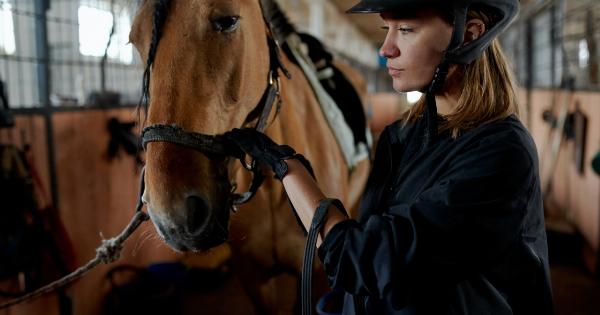In recent years, there has been a growing concern for the well-being and rights of animals, particularly pets. Many countries have taken steps to address these concerns by enacting legislation that protects and promotes the welfare of pets.
One such significant piece of legislation is the Pets’ Bill, which aims to safeguard the rights and interests of pets, provide them with proper care and treatment, and prevent animal cruelty. This article will delve into the specifics of the enacted Pets’ Bill and its impact on the lives of pets and pet owners.
Background of the Pets’ Bill
The need for a comprehensive legislation for pets became evident due to the increasing cases of animal cruelty and neglect.
The Pets’ Bill was introduced to address these concerns and establish legal provisions to protect pets from abuse, ensure their welfare, and hold accountable those who mistreat them.
Key Provisions of the Pets’ Bill
The Pets’ Bill encompasses a range of provisions that emphasize responsible pet ownership, ensure appropriate care and treatment, and prohibit any form of cruelty or harm. Some of the key provisions of the bill are as follows:.
1. Mandatory Microchipping
Under the Pets’ Bill, all pet owners are required to have their pets microchipped. This process involves inserting a small identification chip under the skin of the pet, which contains vital information about the owner and the animal.
This enables easy identification and tracking of lost or stolen pets and promotes responsible ownership.
2. Licensing and Registration
The bill also establishes a licensing and registration system for pet owners. This ensures that pets are owned by responsible individuals who can provide adequate care and meet the necessary requirements.
Licensing also helps authorities in monitoring pet populations and controlling breeding practices to prevent overpopulation and ensure the welfare of animals.
3. Standards of Care
The Pets’ Bill outlines specific standards of care that must be provided to pets. This includes provisions for proper nutrition, veterinary care, exercise, and living conditions.
It prohibits cramped or unsuitable housing, lack of necessary medical attention, and any other forms of neglect or mistreatment that can compromise the well-being of pets.
4. Ban on Animal Fighting and Cruelty
To combat animal cruelty, the Pets’ Bill explicitly bans any form of animal fighting, whether organized or informal.
It also prohibits any activity or treatment that inflicts unnecessary pain or suffering on pets, such as chaining them for prolonged periods, using excessive force, or subjecting them to inhumane training practices.
5. Penalties and Enforcement
The Pets’ Bill imposes strict penalties for those who violate its provisions. Individuals found guilty of animal cruelty or neglect can face hefty fines, imprisonment, or both.
The bill also empowers law enforcement agencies and animal welfare organizations to investigate complaints, rescue animals, and take necessary legal actions against offenders.
Impact of the Pets’ Bill
The enactment of the Pets’ Bill has had a significant impact on pet owners, animal welfare organizations, and the general public. Some of the notable effects are as follows:.
1. Increased Awareness
The introduction of the Pets’ Bill has raised public awareness regarding responsible pet ownership and the need to ensure the welfare of animals.
This has prompted pet owners to become more conscious of their duties and obligations, resulting in improved care and treatment of pets.
2. Reduction in Animal Cruelty
The existence of strict penalties and clear provisions against animal cruelty has led to a decline in such acts.
The Pets’ Bill serves as a deterrent for individuals involved in animal fighting, abuse, or neglect, leading to a safer and more compassionate environment for pets.
3. Improved Animal Shelters and Rescue Operations
The implementation of the Pets’ Bill has encouraged the development of better animal shelters and rescue operations.
With increased public awareness and legal support, more resources are being directed towards providing temporary shelter and rehabilitation for abandoned or mistreated pets.
4. Enhanced Veterinary Care Facilities
The Pets’ Bill has emphasized the importance of proper veterinary care for pets.
As a result, there has been an increase in the availability of quality veterinary services, leading to better health outcomes for pets and improved access to essential treatments and vaccinations.
5. Promotion of Pet Adoption
The implementation of the Pets’ Bill has created a positive impact on pet adoption rates.
With the assurance of legal protections and responsible ownership, more individuals are inclined to adopt pets from shelters or rescue organizations, further reducing the number of stray animals and providing them with loving homes.
Conclusion
The enactment of the Pets’ Bill signifies a significant step towards safeguarding the rights and welfare of pets.
By implementing mandatory microchipping, licensing, and registration, setting standards of care, and imposing penalties for animal cruelty, the bill ensures responsible pet ownership and discourages mistreatment. The positive impact of the Pets’ Bill is evident through increased awareness, reduced animal cruelty, and improved facilities for pets’ well-being.
It is a testament to our society’s growing recognition of the importance of treating animals with compassion and respect.






























